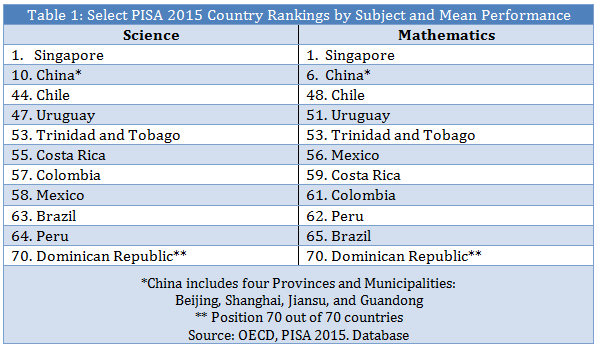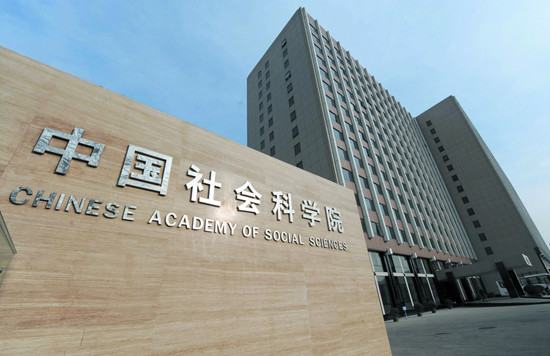
Will Default Dampen China-Argentina Ties?
The Fernández administration’s refusal to comply with a US court order to pay holdout hedge funds has once again landed Argentina in default.
This post is also available in: Spanish
How can we explain China’s educational advantage over Latin America? In several educational indicators, China shares a lot of similarities with Latin American countries. For example, gross intake for 1st grade is about the same. Indicators like primary completion rates for primary education, adult literacy, gross enrollment rates for primary and for secondary are also similar. And although traditionally Latin America was spending more on education as a percentage of GDP, over the last years China closed the gap. Additionally, both have an inequitable distribution of the resources available for education.
However, other indicators show clear differences. Some are in favor of Latin America, like pre-school enrollment rates. Although China has increased pre-school enrollment more than any Latin American country except Chile between 1999 and 2012, China still has a lower average (44 versus 66 percent). Other differences are in favor of China. For example, the student-teacher ratio is much lower in China (18 versus 25).
Another clear difference in favor of China is observed in the different results obtained in the 2015 OECD’s Programme for International Student Assessment (PISA) examinations. The results show that China ranked sixth in Mathematics, tenth in Science, and 27th in Reading, out of the 72 participating economies. On the other hand, Latin American countries were among the poorest performers. In all three subjects tested in PISA, all 10 participating Latin American countries ranked in the bottom 50% (See Table 1 for the case of Mathematics ad Science). What explains China’s superior performance? A simple answer is that China has better schools than LAC countries. But what makes good schools? A comparison between some of the characteristics of Chinese and Latin American (LAC) schools explains why China has for years been a top performing country.

From a systemic perspective, the Chinese education system has traditionally used more assessment instruments than LAC countries. An example is the College Entrance Examination, also known as Gaokao, created in 1952, which is the main instrument to decide who enters higher education institutions. Entrance to high (upper secondary) schools also requires specifically designed tests. At lower secondary schools, the schools use screening tests to select students with special talents before placing the majority students in the neighborhood schools by lottery.
Autonomy is another clear difference. This is important because a growing literature indicates that it improves students’ achievement. Although Latin America has been experimenting with school-based management, China for many years has allowed schools to take more initiative in their own management in pedagogical and financial terms. Some of the school-based management experiences in Latin America focus on the management of a small portion of non-salary budget and have been limited. Real autonomous models, with strong parental participation allowing for personnel management, like EDUCO in El Salvador, have been dismantled even when showing positive results. While in China, the schools not only give autonomy to decide on school-based curriculum (up to 20% of the total), they also are encouraged to experiment with innovations in pedagogy, assessment, management and partnership with private sector. The results not only informed the policymaking process, but also became regional or national benchmarks for assessment purposes.
Another systemic difference is accountability, in particular when referring to teachers. Although at the national level personnel autonomy in China is just emerging, at the provincial and county level it is already established. The four Chinese provinces and municipalities included in PISA implement monitoring mechanisms to measure teachers’ performance, so that non-performing teachers, for example, may be removed from classroom duties. The monitoring of teachers’ performance is also used to develop teachers’ professional development plans, and a substantial part of the schools’ operational budget is used for this purpose. This is not the case in LAC.
A final systemic characteristic relates to the length of the academic year. The number of school days in China is close to 200 days, while the average in LAC is around 180. The length of the school day is also shorter for LAC countries; China on average has at least 2 more hours of pedagogical activity per day. This is a crucial difference, given that there is evidence the time on task is critical for results. This is worsened by the fact that in reality Latin American students have fewer school days than they do on paper. In LAC, from Mexico to Argentina, the theoretical 180 days is just a reference because in many countries recurrent strikes cause the loss of significant numbers of school days. Teachers’ strikes are unheard of in China—so 200 school days means 200 days. In addition, interruption of teaching-learning interaction due to teachers’ absenteeism is an issue in LAC, while in China this issue is minimal. Fortunately, this is a topic to which researchers and practitioners are giving more attention because there is little systematic evidence on the subject, and it is necessary to find ways to effectively increase the time on task in Latin America if we want to reach better education results.
Other important differences have to do with teachers. China is very demanding in the selection of schoolteachers. In the four Chinese provinces and municipalities included in PISA 2015 the selection of teachers is stringent, especially for school principals. A one-year probationary period is the standard before teachers are formally hired by school districts. The teaching standards and learning objectives are well aligned with educational material, and evaluation systems and teachers’ obligations, expectations, and working hours are clear. Performance is linked to promotions and also to pay. The transfer and rotation of teachers is done based on the needs of the system focusing on under-performing schools and where more disadvantaged students live. This is rarely the case in LAC countries, where teachers are often assigned to schools based on seniority preferences.
In terms of culture, we can identify significant differences between China and LAC countries. In China there is an educational ethos that rewards academic achievement. In Latin America, on the contrary, there is sometimes a frustrating lack of intellectual ambition for children to achieve good results in education. Although in both regions parents realize that more and better education will help their children obtain a good job and improve their livelihoods in the future, Chinese people value personal efforts to achieve results much more than Latin Americans. In China, different to LAC countries, still there is the expectation that effort pays off and hard work will get one ahead. In all, in China parents give more importance to education than parents in LAC.
In conclusion, as shown by the case of China, high performing schools exist in systems with enough information (assessments) to generate clear educational indicators, so that stakeholders can evaluate the system in terms of internal and external efficiency indicators and can monitor progress and general trends. They exist where staff has the autonomy to define pedagogical and administrative actions with results and have accountability to produce incentives based on the observed results. But this is not enough. Good schools also require good educational inputs, like quality teachers and cultural attitudes of students and their families that encourage high educational performance.
Eduardo Velez Bustillo is an Independent Consultant with 40 years of international experience in the education sector. Catherine Yan Yang is Director, Department for International Exchange, National Institute of Education Sciences
Photo Credit: Students learning/ Flickr / CC by 2.0
The Fernández administration’s refusal to comply with a US court order to pay holdout hedge funds has once again landed Argentina in default.
Who in China is advising on energy engagement with Latin America?
Will protesters succeed in halting the canal’s construction?

